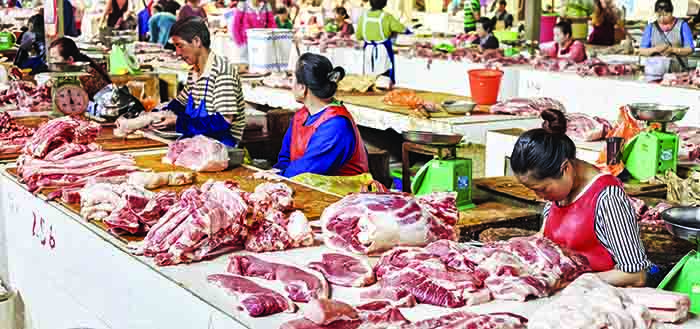A doubling of pork prices last month sent Chinese consumer inflation to its highest level in nearly eight years, according to data from the National Bureau of Statistics.
MarketWatch reported that China’s consumer-price index rose 3.8% in October from a year earlier – higher than a median forecast of 3.5% by economists polled by The Wall Street Journal, and far outpacing September’s 3% reading.
China’s producer-price index dropped deeper into deflationary territory in October, falling 1.6% in October from a year earlier, more than economists’ median forecast of a 1.5% decline. Producer prices fell 1.2% in September from a year earlier.
Falling producer prices are expected to squeeze profit margins at China’s industrial companies, which have already been struggling to cope with tougher environmental rules and reduced orders amid the protracted US trade fight.
Given the continued surge in pork prices, Liu Xuezhi, an economist at Shanghai-based Bank of Communications, predicted headline consumer inflation could top 4% in the coming months, but called on policy makers to act.
“The softness in non-food consumer goods and PPI deflation shows that China’s domestic demand was still weak,” Mr Liu said. “That means pork-driven inflation shouldn’t be the reason for the central bank to stay on the sidelines.”
Government officials have tried other tactics to combat the toll of ASF. China this year has ramped up imports of pork and other meats. But analysts question whether it is enough to fill the shortage in a country that is both the world’s largest producer and consumer of pork.




